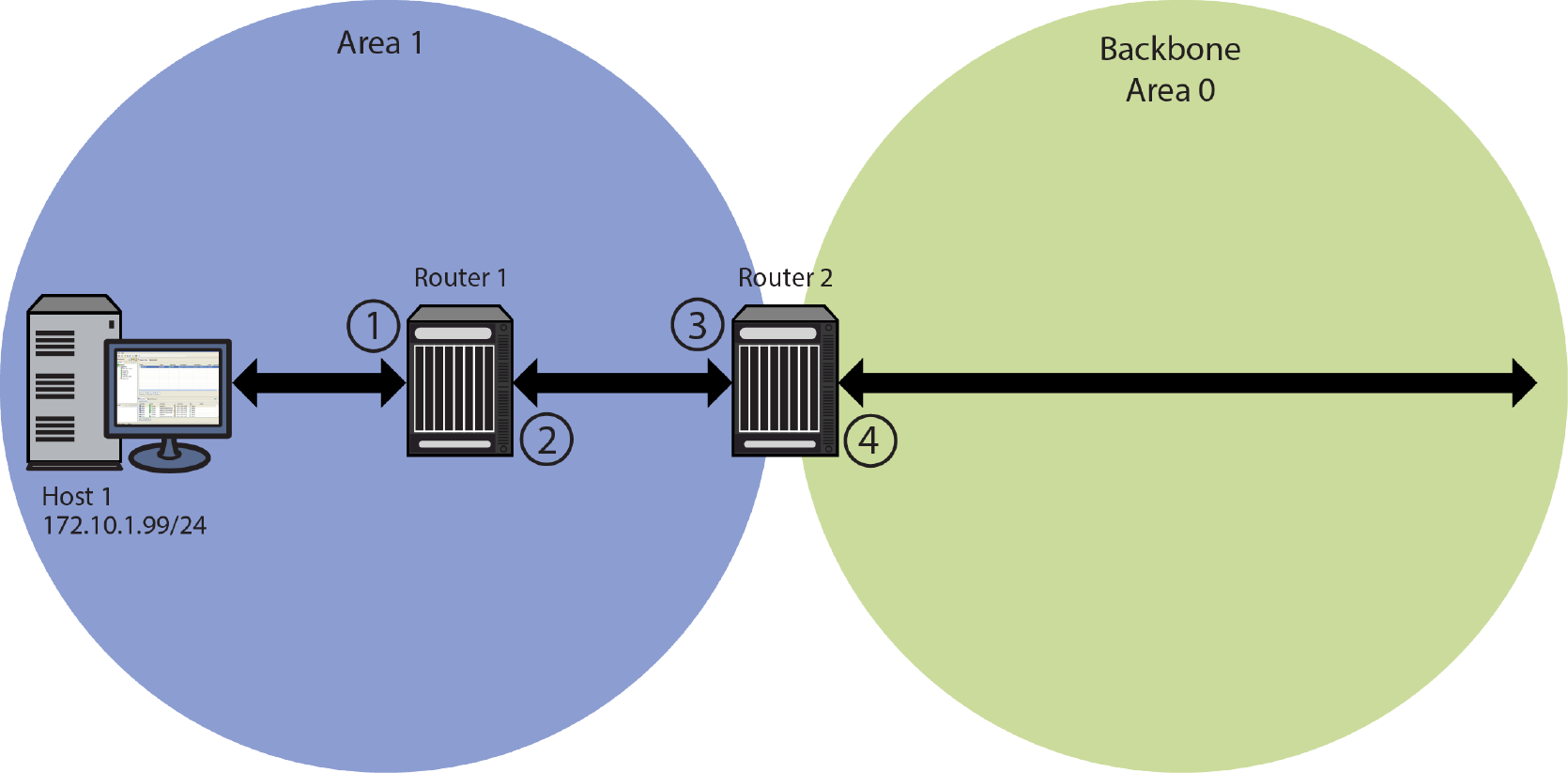Basic OSPF Topology provides an overview of a basic OSPFv3 topology. This topology displays two areas: a backbone area which must exist in any OSPF topology and a directly connected area 1. See Configuring OSPFv3 Areas for a full discussion of OSPF area configuration. This basic configuration requires the configuration of three interfaces and two routers on the OSPFv3 router instance. Because OSPFv3 uses link-local addresses for source and next-hop, an IPv6 address is not required for a minimal OSPF topology. The link-local address is autogenerated on the interface when IPv6 forwarding is enabled. For OSPFv3, the router ID is used as the neighbor ID. For all other OSPFv3 configuration, default values are used.

| 1 | VLAN 1, link-local address: fe80::20a:45af:fe9a:6ca5%1 | 3 | VLAN 2, link-local address: fe80::45f:43ff:fa9b:3bb2%2 |
| 2 | VLAN 2, link-local address: fe80::38c:53fd:fa8a:3bb2%2 | 4 | VLAN 3, link-local address: fe80::a9b:26fa:fc4a:6fa1%3 |

 Print
this page
Print
this page Email this topic
Email this topic Feedback
Feedback